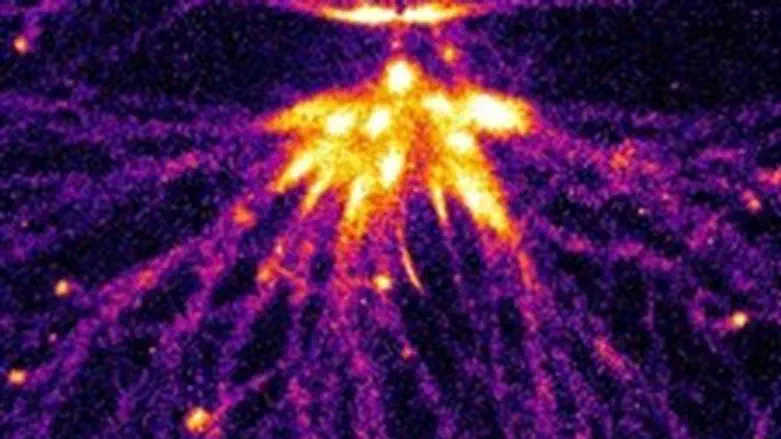
Israeli researchers say that Jupiter, Venus and Saturn experience lightning storms, known as “sprites,” 1,000 times more powerful than those on Earth.
Scientists previously have discovered sprites 30 to 55 miles above the surface of the Earth, but Tel Aviv University researchers say the more powerful lightning storms on other planets may even be a sign of extra-terrestrial life.
Ph.D. student Daria Dubrovin re-created planetary atmospheres in the lab with the help of her supervisors from the Department of Geophysics and Planetary Sciences, the Open University of Israel and collaborators at a Holland university.
Though a little-known atmospheric phenomenon, sprites are quite common on Earth, says Dubrovin. Because they occur in the mesosphere — a layer of the atmosphere that is not regularly observed by satellites and too high to be reached by atmospheric balloons — the discovery of these electric discharges, which are red in color and last only a few tens of milliseconds, was a stroke of luck.
She adds that researchers are keen to know more about the possibility of lightning on other planets, not only because it impacts the technological equipment used by space programs, but also because it is another clue that could indicate the presence of extra-terrestrial life.
Dubrovin and her fellow researchers re-created the atmospheres of Jupiter, Saturn, and Venus in small containers. A circuit that creates strong short-voltage pulses produced a discharge that mimics natural sprites. Images of these discharges, known as streamers, were taken by a fast and sensitive camera and then analyzed.
"We make sprites-in-a-bottle," quips Dubrovin.
Dubrovin believes that the team's predictions could convince scientists operating the Cassini spacecraft – now orbiting Saturn – to point their cameras in a new direction. Currently, she says, there is a huge lightning storm occurring on Saturn producing at least 100 lightning discharges per second — a rare event that happens approximately once in a decade.
Above the lightning-producing clouds in Jupiter's and Saturn's atmosphere, Dubrovin explains, lies a layer of clouds which partly obscure the light from the flashes. If researchers were able to obtain an image of the higher-up sprites from the Cassini craft, it would enable them to gain more information about the storm below.